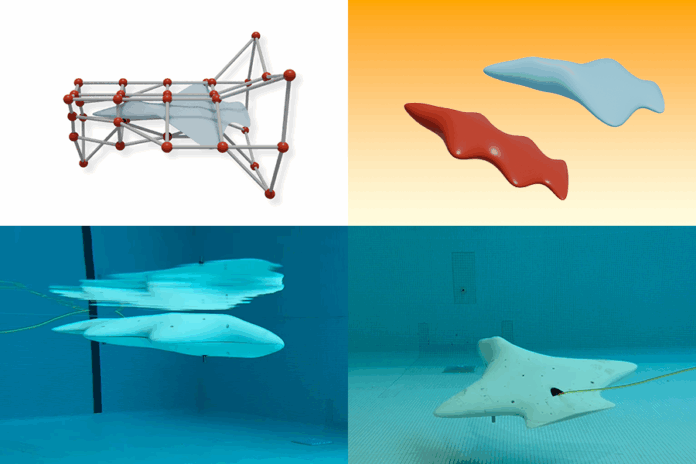Introduction to Efficient Gliding
Marine scientists have long been fascinated by the ability of animals like fish and seals to swim efficiently despite their different shapes. Their bodies are optimized for efficient, hydrodynamic aquatic navigation, allowing them to exert minimal energy when traveling long distances. Autonomous vehicles can also drift through the ocean in a similar way, collecting data about vast underwater environments. However, the shapes of these gliding machines are less diverse than those found in marine life, with go-to designs often resembling tubes or torpedoes due to their hydrodynamic properties.
The Limitations of Current Designs
Testing new builds requires a lot of real-world trial-and-error, which can be time-consuming and costly. Researchers from MIT’s Computer Science and Artificial Intelligence Laboratory (CSAIL) and the University of Wisconsin at Madison propose that AI could help explore uncharted glider designs more conveniently. Their method uses machine learning to test different 3D designs in a physics simulator, then molds them into more hydrodynamic shapes. The resulting model can be fabricated via a 3D printer using significantly less energy than handmade ones.
How AI Generates New Designs
The researchers found 3D models of over 20 conventional sea exploration shapes, such as submarines, whales, manta rays, and sharks. They then enclosed these models in "deformation cages" that map out different articulation points, which they pulled around to create new shapes. The CSAIL-led team built a dataset of conventional and deformed shapes before simulating how they would perform at different "angles-of-attack" — the direction a vessel will tilt as it glides through the water.
Optimizing Glider Performance
The team’s neural network simulates how a particular glider would react to underwater physics, aiming to capture how it moves forward and the force that drags against it. The goal is to find the best lift-to-drag ratio, representing how much the glider is being held up compared to how much it’s being held back. The higher the ratio, the more efficiently the vehicle travels; the lower it is, the more the glider will slow down during its voyage. Lift-to-drag ratios are key for flying planes, and they are just as useful for achieving a similar gliding motion in the ocean.
Testing the AI-Generated Designs
The researchers fabricated two gliders roughly the size of a boogie board: a two-winged machine resembling an airplane and a unique, four-winged object resembling a flat fish with four fins. They first tested the two-wing design in MIT’s Wright Brothers Wind Tunnel, an indoor space with fans that simulate wind flow. The glider’s predicted lift-to-drag ratio was only about 5 percent higher on average than the ones recorded in the wind experiments — a small difference between simulation and reality.
Real-World Evaluation
To truly evaluate these gliders in the real world, the team needed to see how their devices would fare underwater. They printed two designs that performed the best at specific points-of-attack for this test: a jet-like device at 9 degrees and the four-wing vehicle at 30 degrees. Both shapes were fabricated in a 3D printer as hollow shells with small holes that flood when fully submerged. The researchers placed a tube-like device inside these shell coverings, which housed a range of hardware, including a pump to change the glider’s buoyancy, a mass shifter, and electronic components.
Results and Future Directions
Both AI-driven machines outperformed a handmade torpedo-shaped glider by moving more efficiently across a pool. With higher lift-to-drag ratios than their counterpart, both designs exerted less energy, similar to the effortless ways marine animals navigate the oceans. The researchers are looking to narrow the gap between simulation and real-world performance and develop machines that can react to sudden changes in currents, making the gliders more adaptable to seas and oceans. They also intend to explore new types of shapes, particularly thinner glider designs, and make their framework faster and more customizable.
Conclusion
The use of AI in generating new glider designs has shown promising results, with the potential to create more efficient machines that can help oceanographers measure water temperature and salt levels, gather more detailed insights about currents, and monitor the impacts of climate change. As the researchers continue to refine their approach, they may uncover even more innovative designs that can navigate the oceans with ease, inspiring a new generation of underwater exploration and discovery.

